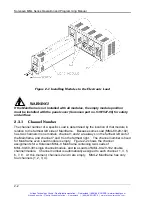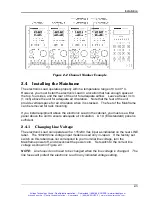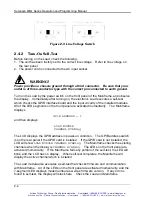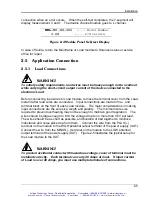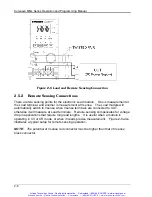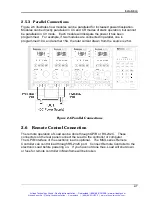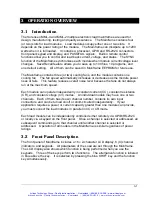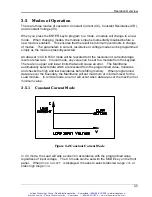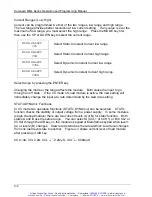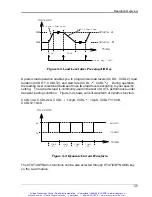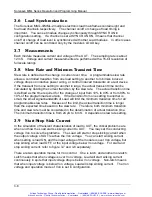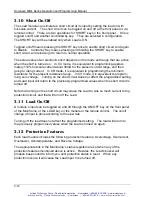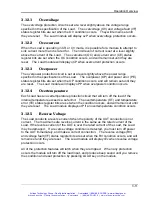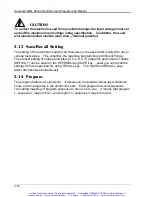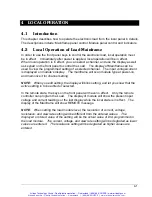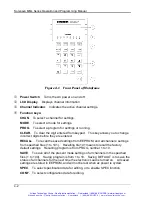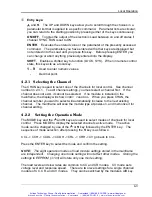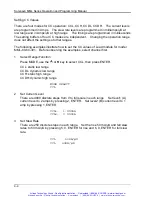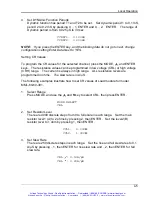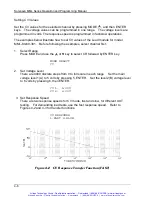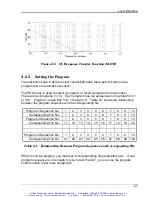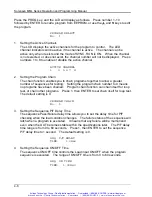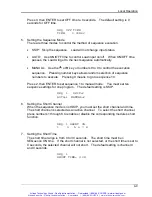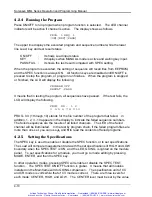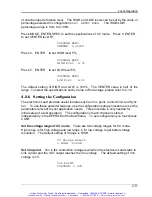
Sorensen MML Series Operation and Programming Manual
3-8
3.6 Load Synchronization
The Sorensen MML-4/MML-2 multiple electronic load mainframes contain eight and
four load channels respectively. The channel on/off or change of load timing is
important. You can set module change synchronously through SYNC RUN in
configuration setting. If a channel is set at SYNC RUN ON, it means that channel
on/off or change of load level is synchronized with other Load modules. In other cases
channel on/off can be controlled only by the module’s LOAD key.
3.7 Measurements
Each module measures current and voltage of the UUT. The sampling rate is about
12 mS. Voltage and current measurements are performed with a 15-bit resolution of
full scale ratings.
3.8 Slew Rate and Minimum Transient Time
Slew rate is defined as the change in current over time. A programmable slew rate
allows a controlled transition from one load setting to another to minimize induced
voltage drops on inductive power wiring, or control induced transients on a test device.
If the transient from one setting to another is large, the actual transient time can be
calculated by dividing the current transition by the slew rate. The actual transition time
is defined as the time required for the change of input from 10% to 90% or from 90% to
10% of the programmed excursion. If the transition from one setting to another is
small, the small signal bandwidth of Load will limit the minimum transition time for all
programmable slew rates. Because of the limit, the actual transition time is longer
than the expected time based on the slew rate. Therefore, both minimum transition
time and slew rate must be considered in the determination of actual transition time.
The minimum transition time is from 24
µ
S to 6 mS. It depends on slew rate setting.
3.9 Start/Stop Sink Current
In the simulation of transient characteristics of load to UUT, the critical problems are
when and how the Load starts sinking current to UUT. You may set the conducting
voltage Von to solve the problems. The Load will start or stop sinking current when
the output voltage of UUT reaches the Von voltage. You can start sinking current
when setting is load ON, and the input voltage of the module is over Von voltage, but
stop sinking when load OFF, or the input voltage below Von voltage. For start and
stop sinking current, refer to figure 3-7 and 3-8 separately.
There are two operation modes for Von control. One is latch, and another non-latch.
Latch means that when voltage is over Von voltage, Load will start sinking current
continuously in spite that input voltage drop is below Von voltage. Non-latch means
that when input voltage is below Von voltage, Load will stop sinking current. The Von
voltage and operation mode of Von is set in configuration.
Artisan Scientific - Quality Instrumentation ... Guaranteed | (888) 88-SOURCE | www.artisan-scientific.com
Artisan Technology Group - Quality Instrumentation ... Guaranteed | (888) 88-SOURCE | www.artisantg.com


